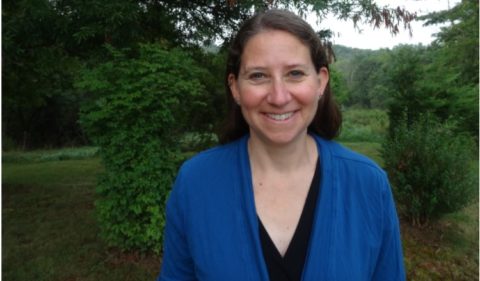
Dr. Rebecca Snell
Dr. Rebecca Snell recently joined the faculty of the Environmental & Plant Biology Department at Ohio University.
Snell has traveled and studied globally, including Calgary, Canada, and Zurich, Switzerland. She researches the way plants and plant communities respond to climate change, looking at changes in vegetation dynamics, succession, biodiversity and the impact on ecosystem functioning.
“Typically I look at forests, but I’ve also done some work looking at pasture woodlands, a semi-open landscape,” Snell explained. “But really it’s looking at how systems respond to climate change, either to temperature or drought.” The changes in species composition, growth and mortality are then examined through the frame of climate change impacts on ecosystem services and functioning.
She has also studied how plants may respond to climate change at larger spatial scales, mostly through migration, which is a complicated issue for the non-motile organisms. That work culminated in ways to improve estimations of potential plant migration. She continued that work in Switzerland, but instead of the natural landscapes of Canada, she researched the cultivated Swiss countryside.
“I was looking at Alpine pasture woodlands, which are high-elevation pastures where cows and sheep graze,” she said. “The problem is grazing is going down because of increasing abandonment, and these pasture woodlands are turning into forests. There is a lot of interest in maintaining the openness in these landscapes, so the research was looking at quantifying the impact of changing management and climate, and identifying possible solutions.”
Here at OHIO, Snell is looking to continue her work in the Appalachia area. She is looking to answer similar questions about the response of forests and forested landscapes to climate change, but due to the high diversity of species, the ecosystem response might be different.
“There’s a potential for them to be slightly more resistant to some of the future climate changes. In Europe, you’re looking at systems that sometimes only have two or three dominant tree species. One of the main species is Norway Spruce, which is sensitive to future droughts, so when Spruce suffers it has huge impact.”
She is excited to examine how having more species changes the way the ecosystem responds, and she is currently recruiting students to work in her lab. While she does a lot of modeling, she is also planning fieldwork.
“Modelers always complain, that no one collects the data modelers want,” she explained. “You have to parameterize your models with variables, but often these variables are not obvious and sometimes can’t be found in the published literature.” Her unique position as a field ecologist and a mathematical modeler gives her the chance to create the data sets and ability to quantify the variables needed for the models.



















Comments